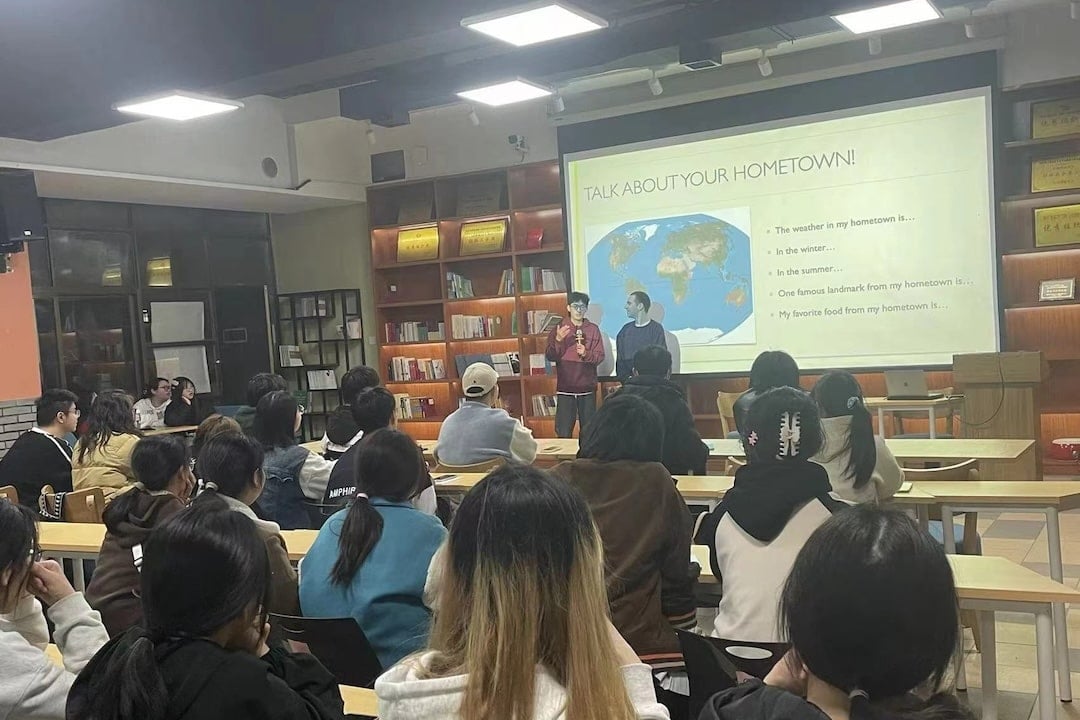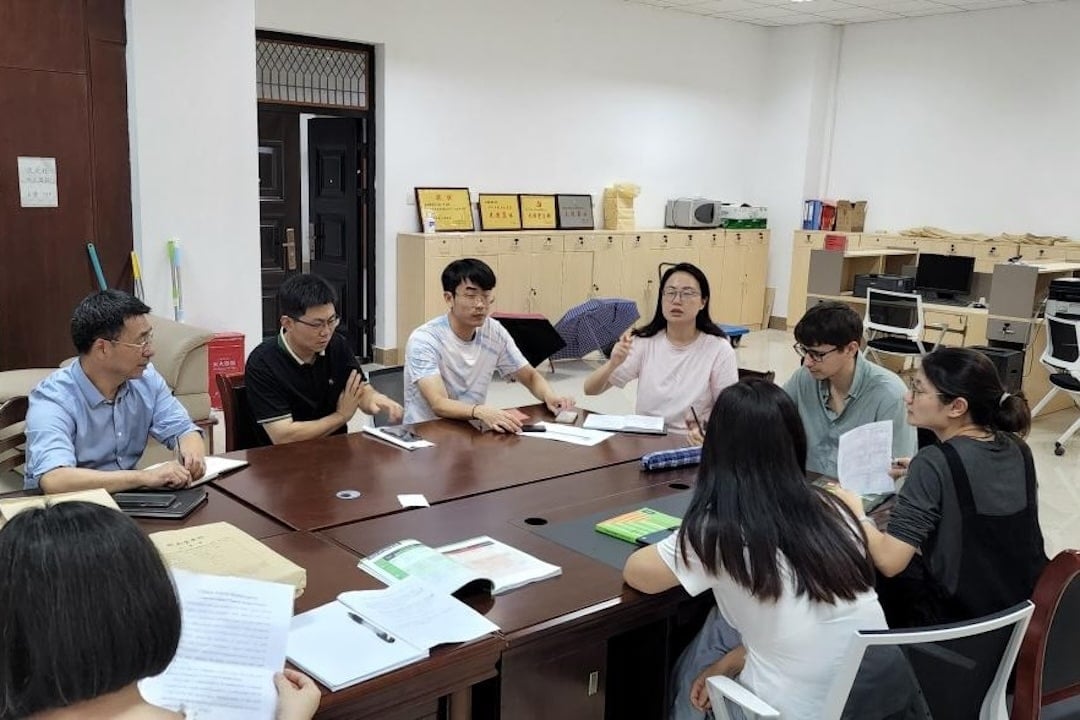Huaihua Expat Life
Huaihua City, located in the west of Hunan Province, has unique geographical conditions and obvious transportation advantages. It has been called the “Guizhou-Yunnan Gateway” since ancient times. It is a bridgehead leading to the southwest of the eastern and central regions and an important transportation hub city in China. Now it has jurisdiction over 10 counties, 1 city and 2 districts, a provincial development zone and a provincial industrial park with an area of 27,900 square kilometers. It is the largest prefecture-level city in Hunan Province with a registered population of 5.255 million. Huaihua Expats can be found at Huaihua University and Hunan University of Medicine. But in total there are not many expats living in Huaihua, which makes the city a very local Chinese city.
Welcome to Huaihua
Huaihua University Impression (English)
Huaihua Expats
Huaihua is located between the two mountains of Wuling and Xuefeng. The rivers are densely covered with abundant rainwater, and the city’s forest coverage reaches 68.8%. It is one of the nine ecologically sound areas in the country. There are 27 demonstration-level nature reserves, scenic spots, geological parks, forest parks, and industrial and agricultural tourism demonstration sites, all of which are “natural oxygen bars” and are known as “a city that can breathe.” In 2011, the Ministry of Environmental Protection officially named Huaihua as the first municipal-level “National Ecological Demonstration Zone” in Hunan Province.
Huaihua is located in the centers around the five provinces of Hunan, Hubei, Chongqing, Guizhou, and Guizhou. It is located in the center of Guiyang-Chongqing-Yichang-Changsha-Guilin and other cities. Docking the Beibu Gulf, the Pearl River Delta and the Wuling Mountain area has the advantage of being located in the eastern coastal area and the transition zone between the central and western regions. Known as the “Gateway to Yunnan”, it is the “bridgehead” of the central and eastern regions of China leading to the southwest. The Huaihua central city has begun to take shape now. The built-up area of the central city has reached 60 square kilometers, and the skeleton of urban roads has expanded to 85 square kilometers.
Huaihua has 5 minority autonomous counties and 2 counties with a minority population of more than half. The minority population reaches 2.1 million, accounting for 40.5% of the city’s total population. Han, Dong, Miao, Tujia, Yao and other 50 ethnic groups coexist and develop harmoniously on this land, creating a unique ethnic culture. The Drum Tower, Wind and Rain Bridge, Hanging Tower, and Closing Banquet of the Qiang Nationality have unique ethnic flavor and business culture. It has the largest, most abundant and perfect combination of ancient cities, towns and villages in China. It has surpassed Huizhou and ranked first in the country. Representing more than 30 clusters of ancient cities and towns in the ancient city, such as Hongjiang Ancient Mall, Qianyang Ancient City, Longtan Ancient Town, Longxi Ancient Town, Jingping Ancient Village, Gaoyi Ancient Houses, Taro Village, Ronghan, Qiang, Miao, etc. National culture as one. The ancient buildings such as Longxingjiang Temple, the “first ancient temple in the south of the Yangtze River” in Tang Dynasty, “Front of the First Relics in the South of Chu River”, Furong Tower, and Tianhou Palace, the largest inland Matsu temple, are well-preserved, which interprets the infinite charm of ancient charm and is known as Chinese Ancient Architecture Museum. “
Huaihua is known as the “Hometown of Woods”, “Hometown of Fruits” and “Hometown of Medicinal Materials”. The city has a standing timber volume of 72.35 million cubic meters, ranking first in Hunan Province. There are more than 1,900 varieties of Chinese medicinal materials, of which 175 are national key Chinese medicinal material protected varieties, which are ranked first in the province. They are the main producing areas of Chinese medicinal materials such as atractylodes, honeysuckle and camphor, and the production of Poria and Gastrodia ranks first in the country. With an annual output of more than 900,000 tons of fruits, Jingzhou bayberry, Xupu candied dates, and Mayang Bingtang orange have long been famous. The proven mineral deposits are of 45 types in 11 categories. The reserves of gold, thorium, and phosphorus rank first, third, and fourth in Hunan. The reserves of stone coal, silica sand, and barite are among the highest in the country. The theoretical reserves of hydropower are 4.99 million kilowatts, and 4.25 million kilowatts have been developed. It is one of the main areas of the top ten hydropower bases in the country.
The terrain in Huaihua is mainly mountainous, with high vegetation coverage and unique natural resources. The city’s main attractions are Zhongpo National Forest Park and Wuxi Square. Paiyashan Forest Park in Jingzhou and Huangjiagong Forest Park in Xinhuang are provincial forest parks.
Weather
Huaihua City has four distinct seasons, no severe cold in winter, no extreme heat in summer, abundant light and heat resources, abundant rainfall, and simultaneous rain and heat. It is a subtropical monsoon climate and is beneficial to crop growth. However, due to the influence of terrain, regional and vertical differences are obvious, the climate types are diverse, and natural disasters such as drought and flood occur from time to time. The city’s annual average temperature is 16.4 ° C. January is the coldest, with an average temperature of 4.7 to 5.3 ° C; July is the hottest, with an average monthly temperature of 28.5 ° C.
Transportation:
Huaihua Zhijiang Airport is located in Huaihua City, Hunan Province. It was built in 1937. It was an important base for the World War II American Flying Tigers to support the Chinese Anti-Japanese War. The airport is now equipped with a Flying Tigers showroom. The reconstruction and expansion of the airport commenced in January 2003, and it was constructed as a civilian airport. It is the fifth civil airport in Hunan Province after Changsha Huanghua International Airport and Zhangjiajie Hehua Airport. It was officially opened on December 19, 2005, and the first phase opened the Zhijiang-Guangzhou (via Changsha) route. The airport construction standard is 3C. The terminal is 2,400 square meters. Zhijiang Airport serves the airport of Huaihua City. It is a 4C domestic regional airport that can meet the full load takeoff and landing of Boeing 737-300 aircraft (140 seats).
In June 2018, the Huaihua Zhijiang Airport terminal reconstruction and expansion project was completed. Zhijiang Airport operates 9 routes and 13 navigable cities (Beijing, Shanghai, Kunming, Xi’an, Haikou, Jinan, Nanning, Quanzhou, Chengdu, Sanya, Qingdao, Shenzhen, Tianjin).
Huaihua Expats
Expat Life in Huaihua
Famous Restaurants Huaihua Expats Don’t Want to Miss
1. Taoranju
Add:Wushui Rd., Huaihua
Tel: (86)745-2241888
2. Xiangshui Renjia
Add: 373M. Yingfeng Rd., Huaihua
Tel: (86)745-2724888
3. Xiangguofu
Add: 177E.Yingfeng Rd., Huaihua
Tel: (86)745-8267888
Bar and Café
Yinghuang Music Bar
Jinfulou Tower
Huanggong Huadu
Classic Coffee House (Huaihua Branch)
Higher Education Institutions
怀化学院 Huaihua University
湖南医药学院 Hunan University of Medicine
Public Schools
怀化华美外国语学校 Huaihua Huamei Foreign Language School
怀化市第三中学 Huaihua No.3 High School
怀化铁路总公司第一中学 No.1 High School of Huaihua Railway Corporation








